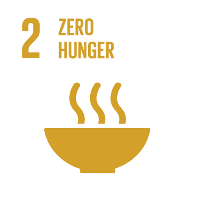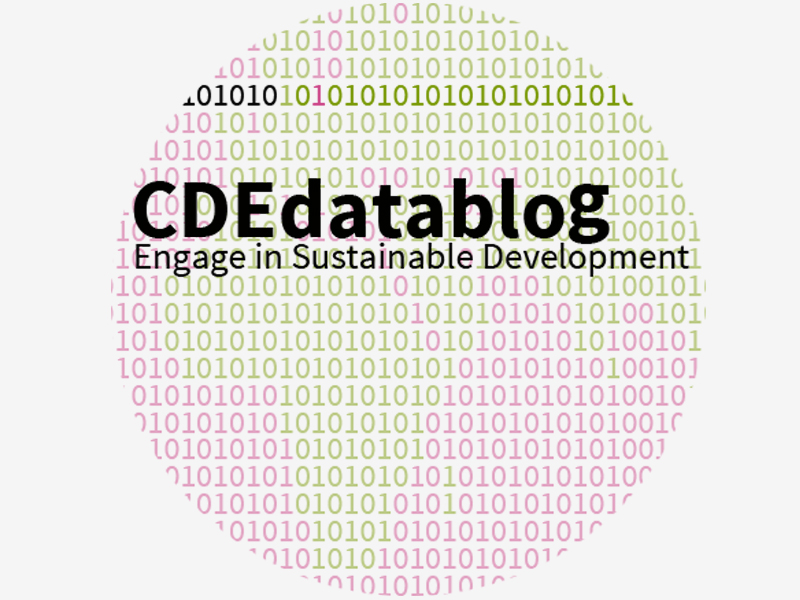The 2030 Agenda requires coherent policies
Navigating trade-offs related to SDGs – the case of ending hunger
Click for German version.
Sustainable Development Goal (SDG) 2 of the United Nations’ 2030 Agenda for Sustainable Development is to end hunger, achieve food security and improved nutrition, and promote sustainable agriculture. Numerous policy measures can contribute to its achievement. But each of them comes with a bundle of positive and negative “side effects”. The example of food security illustrates how complex it can be to implement the 2030 Agenda.
From field to plate – and beyond
Food systems include the provision of inputs, the production of food, feed, or fibre, the transport, processing, retailing, and consumption of agricultural goods, and the disposal of packaging and organic waste. Food systems are complex and interrelated. Furthermore, they are embedded in national and international policy and regulatory frameworks.
Navigating trade-offs related to the SDGs: the case of ending hunger
These policy and regulatory frameworks define the basic parameters of food systems and the markets they are operating in. By doing so, they shape the conditions for various actors’ food security, and they impact on natural resources such as soils, water, the atmosphere, and agrobiodiversity in different ways. For this reason, it is important to accurately assess any policies developed to promote progress towards SDG 2. Possible trade-offs between the various targets under SDG 2 and with other related SDGs need to be uncovered, and interests must be carefully balanced.
A simulation tool shows what the challenges might be
In the following simulation, it is assumed that both Bolivia and Switzerland adopt new policies to promote food security and the implementation of SDG 2. Their policy decisions will then be assessed – in a simplified way – for their compatibility with further targets of SDG 2 and other related SDGs. Such simulations can help to find ways of framing optimal policy options.
Bolivia
It is assumed that the government of Bolivia decides to implement SDG 2. In order to address the eight targets listed for this goal, the government discusses several policy options. Each of these options has other implications for different producers, natural resources, and social conditions in the country, and can therefore be scored according to the achievements in each of the eight targets of SDG 2. Each policy option comes with different trade-offs, also if measured against other SDGs. The optimal policy option consists of a package of related actions which simultaneously target environmental, social, and economic elements of current food systems.
Switzerland
It is assumed that the Swiss government decides to support the implementation of SDG 2 in Bolivia. It is further assumed that for this purpose, the government assesses its current trade measures and their impact on food systems in developing countries, and that while doing so it also examines options to facilitate access of developing countries’ producers to the Swiss market. The policy measures it is assumed to propose would influence food systems in the global South in different ways, depending on the extent to which trade-offs between SDGs can be minimized. Furthermore, the proposed policies’ impacts on Swiss food systems need to be taken into account as well.
Click for fullscreen
Data visualisation by Christoph Bader. We used the open source software by Hakim El Hattab reveal.js
Goal 2: End hunger, achieve food security and improved nutrition and promote sustainable agriculture

- 2.1 – By 2030, end hunger and ensure access by all people, in particular the poor and people in vulnerable situations, including infants, to safe, nutritious and sufficient food all year round
- 2.2 – By 2030, end all forms of malnutrition, including achieving, by 2025, the internationally agreed targets on stunting and wasting in children under 5 years of age, and address the nutritional needs of adolescent girls, pregnant and lactating women and older persons
- 2.3 – By 2030, double the agricultural productivity and incomes of small-scale food producers, in particular women, indigenous peoples, family farmers, pastoralists and fishers, including through secure and equal access to land, other productive resources and inputs, knowledge, financial services, markets and opportunities for value addition and non-farm employment.
- 2.4 – By 2030, ensure sustainable food production systems and implement resilient agricultural practices that increase productivity and production, that help maintain ecosystems, that strengthen capacity for adaptation to climate change, extreme weather, drought, flooding and other disasters and that progressively improve land and soil quality.
- 2.5 – By 2020, maintain the genetic diversity of seeds, cultivated plants and farmed and domesticated animals and their related wild species, including through soundly managed and diversified seed and plant banks at the national, regional and international levels, and promote access to and fair and equitable sharing of benefits arising from the utilization of genetic resources and associated traditional knowledge, as internationally agreed.
- 2.a: Increase investment, including through enhanced international cooperation, in rural infrastructure, agricultural research and extension services, technology development and plant and livestock gene banks in order to enhance agricultural productive capacity in developing countries, in particular least developed countries
- 2.b: Correct and prevent trade restrictions and distortions in world agricultural markets, including through the parallel elimination of all forms of agricultural export subsidies and all export measures with equivalent effect, in accordance with the mandate of the Doha Development Round
- 2.c: Adopt measures to ensure the proper functioning of food commodity markets and their derivatives and facilitate timely access to market information, including on food reserves, in order to help limit extreme food price volatility
This contribution draws on empirical findings of the R4D project “Towards Food Sustainability: Reshap-ing the Coexistence of Different Food Systems in South America and Africa”. This project is carried out by the following partenrs: in Switzerland, by theCentre for Development and Environment CDE, the Institute of Social Anthropology, and the World Trade Institute, as well as the Geneva Academy of International Humanitarian Law and Human Rights; in Bolivia, by Agroecologia Universidad Cochabamba (AGRUCO); and in Kenya, by the Centre for Training and Integrated Research in Arid and Semiarid Lands Development (CETRAD).


